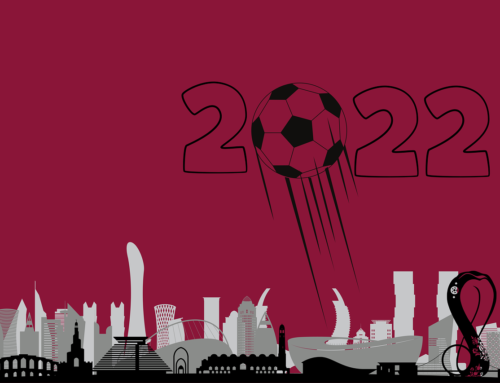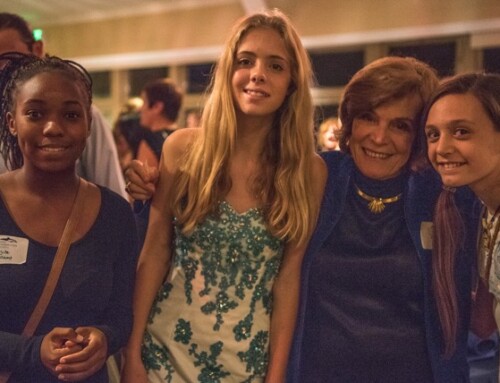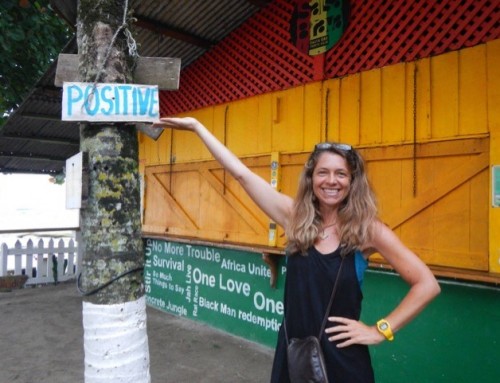Healing the Soul, Soothing the Soil
An indicative proposal for realization of the capital value of goodness
by Jyotirmay Goswami
The world is passing through several major crises today. There is growing unemployment and rising gap between rich and poor. Extreme inequality and the associated social tension provide a fertile ground for violence. Some conflicts involve large groups and even lead to permanent displacement of people. There is also a crisis of agriculture. Large tracts of agricultural land are losing fertility due to misuse or over-use. Experts expect a 40% loss of agricultural land in the next 50-60 years, by which time there will be about 30% increase in the world population. There is an imminent threat to food security. Increasingly globalized competition is squeezing returns from small farming. People in India and elsewhere are moving out of agriculture and allied professions at a rapid rate. Many of them are moving out of their homes and joining the large mass of migrating people. There is an environmental crisis too. Steady destruction of forests and other greenery is leading to loss of soil and disruption of the water cycle. Air and water pollution are causing a lot of suffering. According to a study published in the Lancet journal last year, pollution was linked to about 9 million deaths in the year 2015. Biodiversity is being destroyed with species after biological species being wiped out at an unprecedented rate, while leaving humans in an increasingly lonely and scary world. Acute environmental degradation is also creating a new legion of migrants called environmental refugees. In 2009, the UN High Commission on Refugees estimated that there were 36 million of them worldwide.
Crisis of spiritual imbalance
A defining characteristic of human history has been the unchecked triumph of masculinity. The go-getters have not only been rewarded disproportionately, but have also been eulogized. The glitter of achievement has consistently induced awe and admiration of the general populace. Masculinity has thus proceeded to conquer one frontier after another.
Until recently, the object of that conquest had mostly been other men and women. The misery caused by their violation had been somewhat localized. Since the industrial revolution, however, the intent to conquer and plunder has been directed increasingly towards nature. All of nature’s gifts – be it coal, oil, minerals, sand or wood – has become fair game for plunder. Rather than gracefully accepting what Mother Nature can give year after year, agriculture has sought to violate her and snatch the last bit from her instantly. While the extracted wealth has flowed steadily towards a handful of centers of power, mankind as a whole has suffered from blighting of air, water and soil, and loss of the soothing proximity to nature.
A commonality that binds all people, irrespective of their position in any conflict, is that they live in increasing isolation from nature and from one another. Few people have any role in the production of the food they eat. The sight of a single green leaf emerging through the crack of a seed, the sound of crickets at night, the smell of freshly collected milk or the touch of grass under the bare feet is unknown to many. The distance inevitably turns food into a commodity, rather than an opening through which the human soul can connect to the flow of life.
There is a similar disconnect with nature in general, which makes people insensitive to degradation of greenery and waterways. Sadly this misfortune plagues even the most ardent advocates for the environment. A good example is the mechanism of carbon credit under the Kyoto protocol, which permits a country to pollute its own air in exchange for planting trees in another faraway country. Increasing isolation of humans from their source of sustenance leads to accumulation of stress and degradation of their mental and physical health. Unlike a broken electrical circuit, a spiritual disconnect is hard to repair.
Benefits of technology, which have reached near and far corners of the Earth in varying degrees, generally keep people somewhat pacified and oblivious to the terrible losses that they suffer. There are occasional exceptions though. Acute deprivation and marginalization sometimes prompt people in certain regions to fight back. There have been many struggles of this kind over the past century. Ironically the struggle is often aimed at mimicking the achievements of the adversary. The proletariat has to become the dictator, and the woman has to become manlier. That confounds the very purpose of the struggle. The ultimate triumph becomes indistinguishable from abject surrender to masculinity.
We have forgotten that life on earth depends crucially on nurturing, nourishing, soothing, reconciling and such other qualities that are commonly identified as feminine. The evolution of agriculture, family and society would not have been possible without these. While these attributes are generally associated with women, they are also found in ample measure among men. Rather than falling for a stereotypically binary characterization, it has to be recognized that for millennia women and men have tended their young and the animals together, watered plants, stored provisions for future, cared for one another and indulged in a hundred other activities that have nothing to do with the so-called masculine qualities. These activities have been expressions of an inner strength that is overlooked if we think of civilizations as founded solely on exploration, conquest, extraction, innovation and such other ‘masculine’ qualities.
Civilization has historically been driven by two types of relation – human relation and business relation. The former invokes feminine qualities, starts from family, extends to society and aspires to embrace the universe. The latter invokes masculine qualities, connects the self with the city and transcends to the state and the global market. Human relations tend to defy the self and even the state, while business relations tend to dismiss the family and the society. Human relations are driven by anxious fondness and expressed as contentment and thankfulness; business relations are driven by fear and greed and expressed as dissatisfaction and doubt. The former seeks the immortal while the latter seeks to stave off extinction. Yet the former has perpetuated the flow of civilization all along, while ironically the latter is now threatening to bring it to end.
The emergence of business relation as the domineering component of human endeavors has been a relatively recent phenomenon. This imbalance can easily be seen to be an important factor behind the aforementioned crises. No expert can restore the balance by injecting a dose of femininity in people. One needs a holistic view of life that spirituality can imbibe.
Pattern of response
Many non-religious groups respond to different aspects of the crises. Some work towards empowering the affected people in various ways. Some push for change in laws, practices or social order. The changes advocated by them are meant to benefit the worst affected people, but are often unacceptable to some others. Those who propose a particular change and those who oppose it generally have different fragmented visions of the issue. A common ground is missing. The efforts of the non-religious groups are also generally devoid of spirituality.
Religious organizations have responded to the crises somewhat differently. There has been focus on salvation of individual souls or helping the affected people to cope with their trauma. Relief work pursuant to a disaster is another area of their work. These groups also provide a linkage between the disadvantaged and the advantaged people through the vehicle of charity.
Many religious groups also provide value based education. Through this and other activities, they conserve, and possibly expand, the number of people under their influence. This aspect of their work has invariably led to escalated conflict. Sometimes profound messages become narrow when they are sought to be held through a rigid structure. The rigidity of the structure is often mistaken as a sign of durability. Yet a powerful message can outlast the structures designed to hold it. A good example is the influence of Buddha’s message on people who are not even Buddhist by religion. By focusing on the central message rather than the narrow interpretations, religious groups may have a better chance of serving their cause.
Yet the needs of people are not confined to coping with acute distress. For example, a displaced person may find it impossible to rebuild connections with nature, which had been an integral part of the life left behind. A person staring at imminent displacement may not be soothed by the prospect of relief after that catastrophe hits.
The mantra “Prevention is better than cure” transcends the medical sphere and is applicable to all aspects of life. In the social sphere, work in the area of prevention is done mostly by non-religious entities. If religious groups venture into this area, they might bring in the spiritual aspect that is lacking in the work of other groups. However, in order for them to be able to do so effectively, there has to be clarity about the spiritual dimension of the crises.
Let us now see how this insight can help us in finding concrete ways to avert crises before they happen. The world is too diverse a place to be amenable to a straight-jacket solution. There may be some general principles, but rather than laying these out as bullet points, I would provide an example in the form of an indicative proposal.
An indicative proposal
The example relates to the state of West Bengal in India, where I come from. The area lies in the delta of the river Ganga. The land-holdings are small and numerous, and the centuries-old practice of family farming is now being rendered uneconomical. In India, there is a government scheme called Mahatma Gandhi National Rural Employment Generation Scheme (MGNREGS). Funds of MGNREGS are generally used for labour intensive projects such as building of dirt roads and renovation of ponds. These projects do bring people together for a common activity, though in a somewhat mechanical way. This can be turned into an occasion of organic cooperation, if it is for an inspiring cause that holds potential for common and tangible good.
The endeavor described here is far more complex than a typical MGNREGS project. A dedicated group of people is needed. This job may be entrusted to a body selected unanimously by the villagers. We will refer to this group as the club. It is absolutely essential that the club is formed through complete participation of the entire community. This participation may be facilitated by an external group, whom we can call the agency. A religious group is perhaps best placed to act as the agency, as they know the value community participation. This group may also be entrusted with the responsibility of overseeing proper utilization of the MGNREGS funds.
Several aspects of the work such as identification of unutilized or under-utilized land, allocation and coordination of multiple tasks, networking and so on come naturally to women. In fact women might be natural choices as members of the club. It is said that farming was born at the hands of women, and it would only be fitting if it is revived at the hands of women too.
Natural and diversified farming, largely a lost art, is being reinvented and improved upon. It is also a subject of cutting edge research. The technology of many varieties of natural farming is not readily available to small farmers, who may find it difficult to adapt to them. This is where universities and colleges or NGOs working on these matters can step in, at the invitation of the facilitating agency.
In India, short term farming is often done through sharecropping. This practice can be extended to medium and long term farming of timber and fruit trees in unutilized and under-utilized land, mentioned earlier. The proceeds of this farming would be shared by the owner of the plot (whose only role is to allow the trees to be grown there), the club (which provides the human capital required for the activities, over and above the MGNREGS resources, and manages the activities) and the agency (which facilitates knowledge acquisition/dissemination and possibly fund flow under MGNREGS). There can be tentative sharing formula (say 40:40:20) that would be an incentive for generating new wealth for everyone.
A ready means of saving is absolutely essential in areas receiving MGNREGS funds, just as drainage is essential in fields receiving a sudden dose of irrigation. The ill-effects of too large a role of money in society have been well documented, and need not be listed here. Poor people often do not have access to banks for lack of assets or surety. The club can absorb their excess cash in exchange for stocks, and invest that cash. Everybody would contribute and everybody would get some stocks. People can buy stocks in the name of their loved ones. Some of the young and infirm can also participate in the activities of the club.
While the present proposal is exclusively for rural areas, there is potential for voluntary participation of people in urban areas through contribution of part-time labour, purchase of shares and purchase of quality produce. In the age of Foreign Direct Investment, there might emerge scope of investment from cities to villages, however small that might appear initially.
The bigger picture
The multiple global crises call for a commitment of the general public to every citizen’s right to a healthy environment and the complementary duty to it. Its mission is to heal the souls of not only the victims of the system of aggression and exploitation, but also those who uphold that system. Rather than getting embroiled in a conflict, it embraces the route of harmony and nonviolence for rural reconstruction. In fact, this had been an area preferred by Mahatma Gandhi for practice of nonviolence, though he is better known for using nonviolence as a weapon for India’s freedom movement.
As an aside, I might add that Rabindranath Tagore, another towering personality of that era, had predicted that Gandhi’s nonviolent movement for freedom would follow the logic of a movement – and not the logic of nonviolence. Gandhi’s response had been that he was ready to learn from experience. We do not know what he had learnt, but the nation experienced much violence in the wake of freedom, and is still grappling with the long-term effects of that legacy.
Let the capital value of goodness be realized through activities such as the proposed initiative.
This initiative demands a very artistic, sensitive and sobering touch from the part of the facilitating organization. I am very glad to tell you that Sri Gaudiya Math, a religious organization, whose message of ‘Love for the Lord’ resonates with ‘Love for Life’, has taken up the challenge of turning it to reality. Religious organizations have better potential to embrace all in a small community and make such an endeavor successful. I would invite all such religious organizations to come up, be a part of it, and perhaps take up similar work elsewhere.
Almost all Hindu worship starts with a solemn offering to life the eternal as Om Pranaya Swaha. With life facing such a peril at this juncture of history, we have to seek potent ways of offering worship to life and Nature. I have presented what I consider the most appropriate way in my area. Can you think of a way in yours?







Leave A Comment